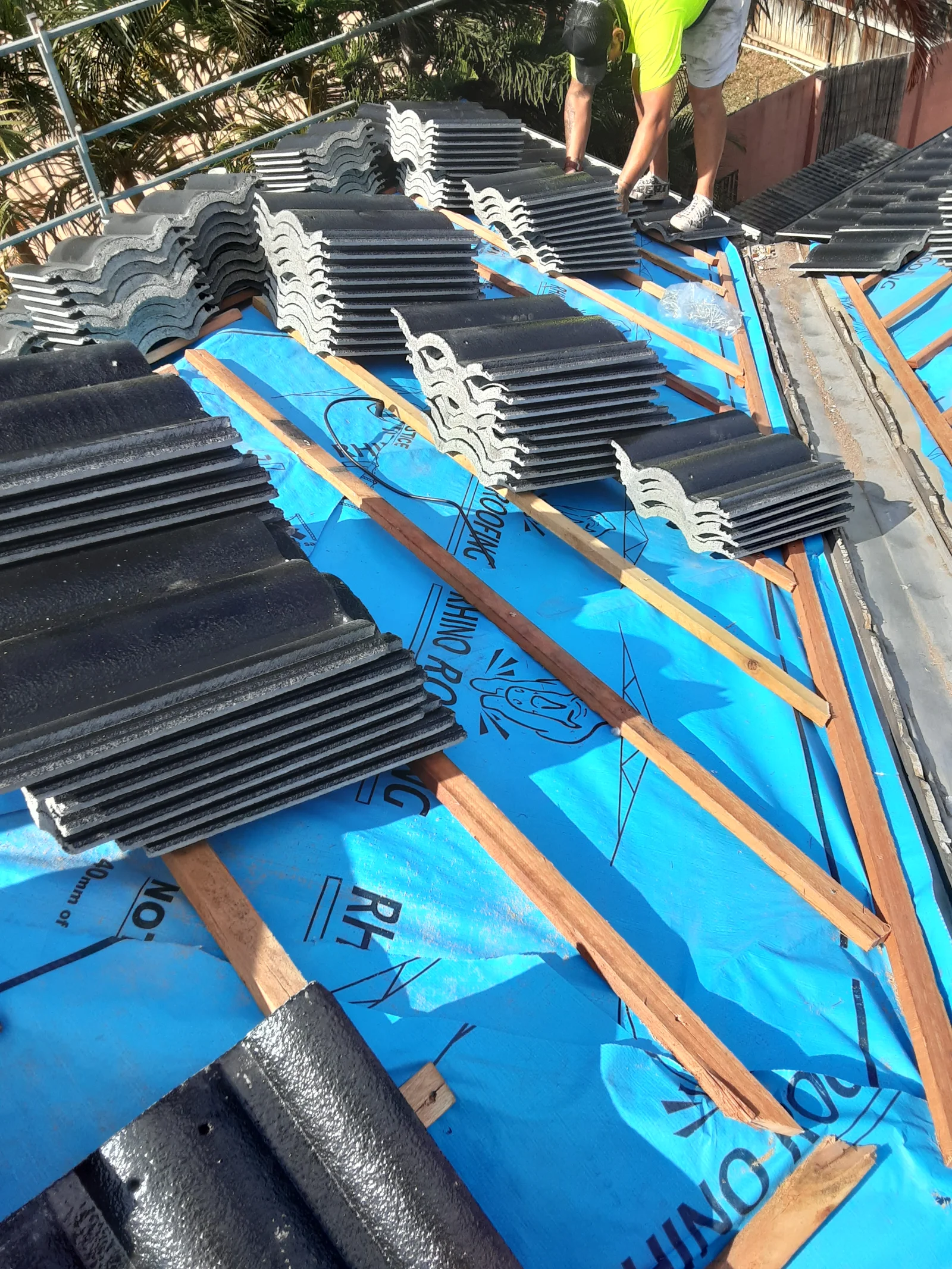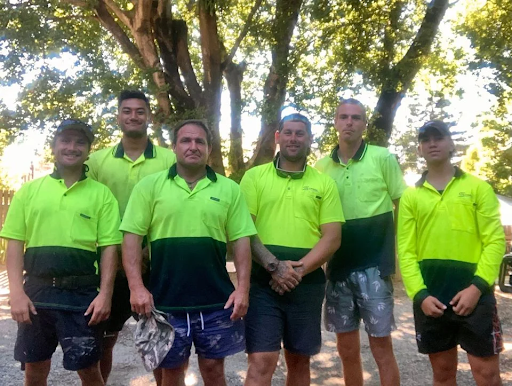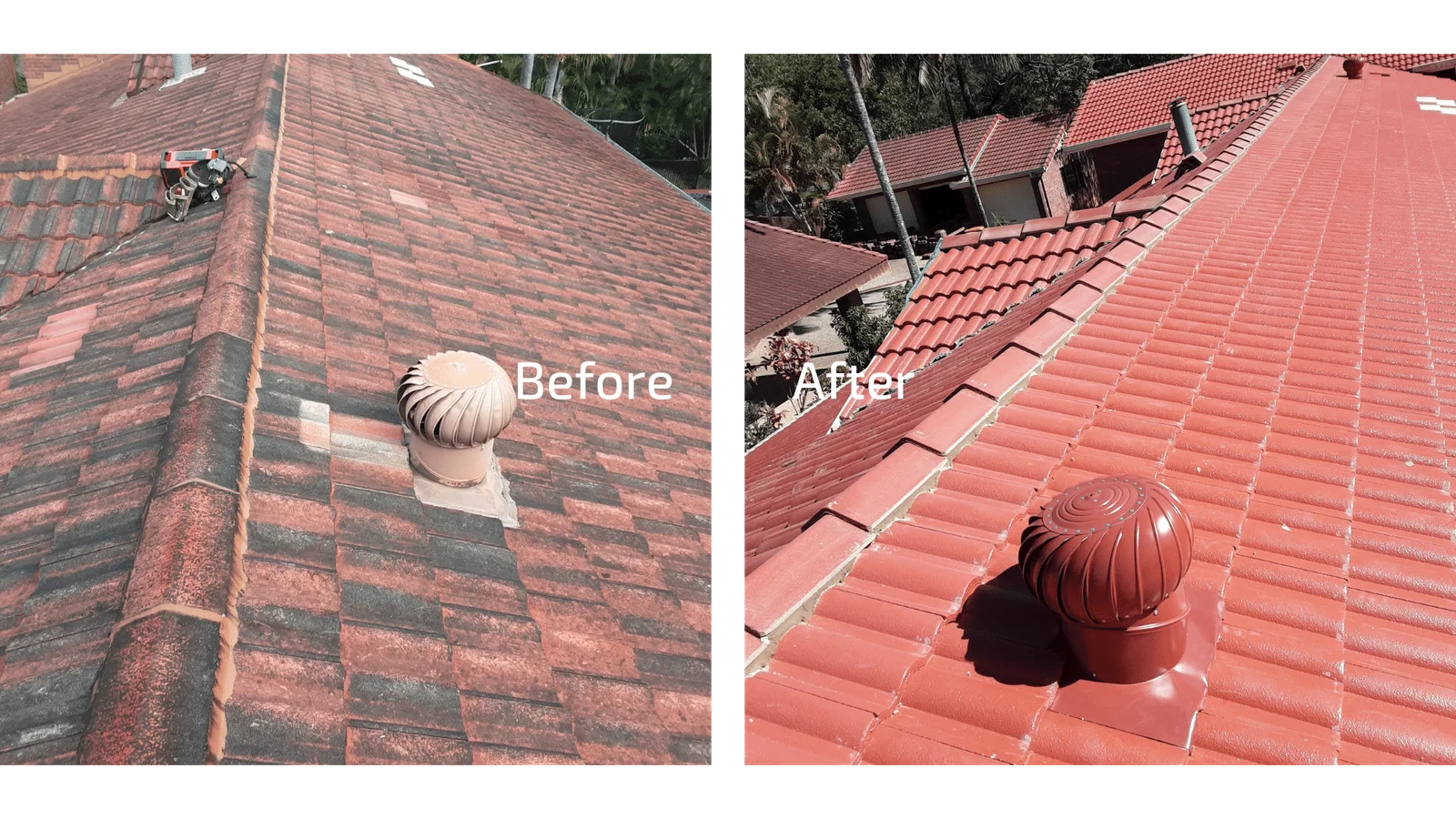Ever wondered about the red-tiled roofs dotting the Australian landscape? Those terracotta tiles have been around for over a century, but roofing styles have come a long way since the early days of settlement. As you look at rooftops around Queensland and beyond, you’ll notice quite a variety in shapes, colours and materials. From the iconic terracotta tiles of the late 1800s to concrete tiles, steel sheeting and solar panels today, roofing has evolved to suit our hot climate and modern needs.
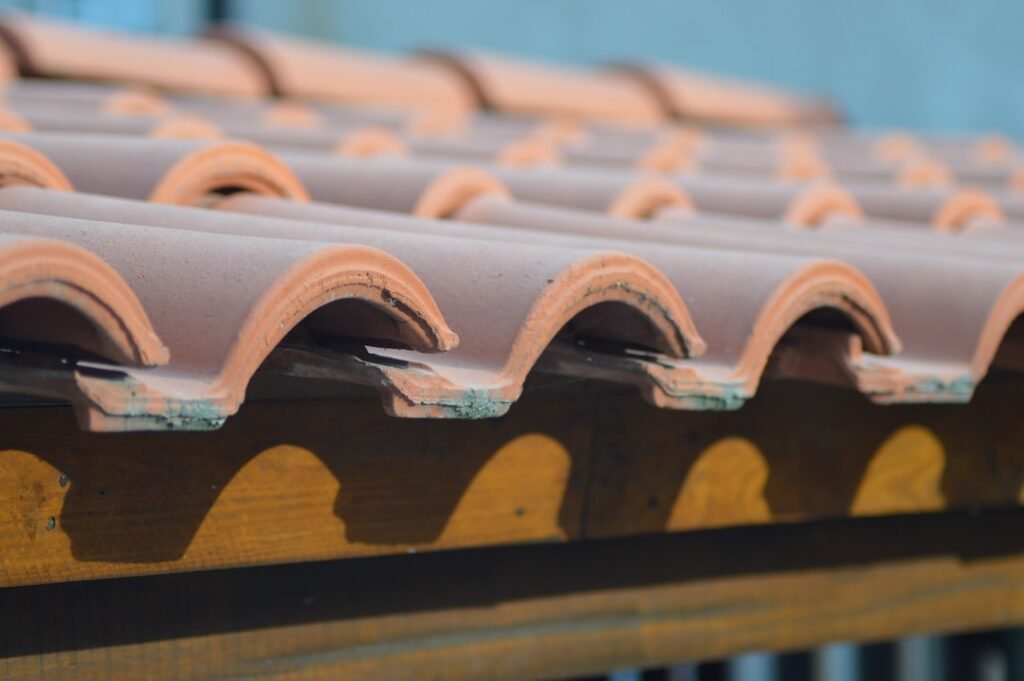
The Origins of Tile Roofs in Australia
When European settlers first came to Australia, they brought with them knowledge of tile making and roofing techniques from their native countries. Terracotta roof tiles, which originated in China and the Middle East, were introduced and rapidly became popular for their durability and fire resistance.
The earliest known tile kilns were established in Sydney in the 1830s. By the 1850s, tile roofs had become widespread, especially in the warmer northern areas of New South Wales and Queensland. The most common styles were Marseille and Roman tiles, made of terracotta clay. These ornate tiles were ideal for the elaborate Victorian buildings of the time.
In Queensland, the hot and humid climate led to the development of specialised tiles. Keyline tiles, with their curved profile and wide laps, allowed for better ventilation and weather protection. The innovative Wunderlich tile, first made in 1868, incorporated wider gaps and an s-profile to increase airflow under the tile. These design features helped combat issues like mould and moss growth in the sub-tropical weather.
Modern manufacturing techniques have allowed for an even greater range of tile profiles, colours and finishes. However, terracotta and concrete tiles are still popular for their visual appeal, durability and suitability for the Australian climate. Tile roofs have endured for over 150 years in Australia due to these qualities, and will likely remain an iconic part of Queensland’s architectural heritage for generations to come.
Early Clay Tile Roofs in Queensland
If you own an older home in Queensland, chances are you have a clay tile roof. Clay tiles have been used in Australia since the early 1800s and were the go-to roofing material for decades.
The first clay tiles were imported from France and England. These terracotta tiles were expensive, so only wealthy homeowners could afford them. As local tile manufacturing started up, costs came down and clay tiles became more common.
The Rise of Marseille Pattern Tiles
In the 1860s, the Marseille pattern tile was introduced. This interlocking tile was cheaper to produce and instal. It quickly became popular and dominated Queensland rooftops for years. The rounded shape and reddish-orange colour of Marseille tiles defined the classic Queenslander house style.
Over time, other clay tile profiles emerged, like the shingle pattern and Spanish pattern. Tile manufacturing techniques also improved, allowing for a greater range of colours. By the early 1900s, you could get clay tiles in shades of brown, green, and grey in addition to the traditional terracotta.
While concrete and metal roofing materials now dominate, clay tiles remain an icon of Queensland’s architectural history. Some homeowners still choose clay tiles for their beauty, durability, and ability to keep homes cool in a hot climate. If your house has original clay tiles, consider yourself lucky – they’ve stood the test of time and add character that newer roofs just can’t match.
Clay tile roofs represent an important part of Australia’s building heritage. With ongoing preservation and restoration efforts, these roofs will continue sheltering Queenslanders for generations to come.
The Introduction of Concrete Tiles
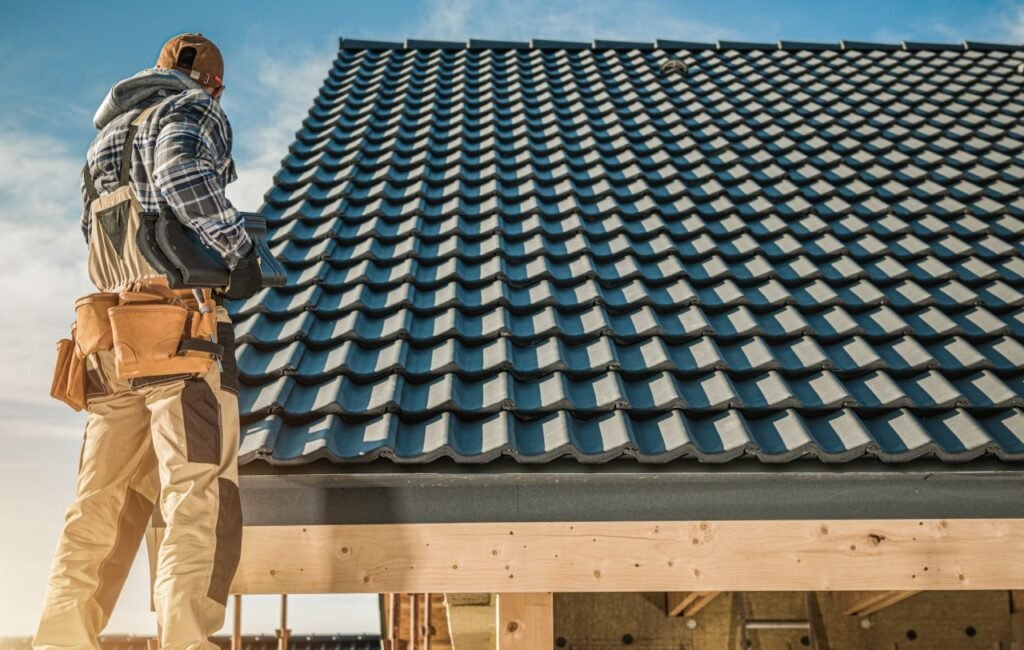
The 1940s saw the introduction of concrete roof tiles to Australia, revolutionising roofing and home design. These tiles were more affordable and durable than traditional terracotta tiles, quickly becoming popular, especially in Queensland.
The Rise of Concrete Tiles
After World War II, concrete tiles began being manufactured in Australia. They were an inexpensive, low-maintenance alternative to terracotta tiles. Homeowners flocked to the new roofing material, liking how it mimicked the look of terracotta but without the cost or fragility.
By the 1970s, concrete tiles dominated the Australian roofing market. They came in a variety of profiles, colours and textures to suit any architectural style. Their longevity and fire resistance made them ideal for Australia’s harsh, hot climate.
Designs for Every Taste
From flat concrete tiles to textured ones resembling Spanish or Mediterranean terra cotta tiles, options abounded. Tiles were made to imitate wood or stone. Colours ranged from basic reds to a variety of greys, browns and tans.
Home designs evolved to showcase the new tiled roofs. “Queenslander” homes featured steeply-pitched, tiled roofs to maximise air flow in the hot climate. Tuscan or Spanish Mission styles also became popular, with their rounded arches, stucco walls and terracotta-hued tiled roofs.
Staying Power and Sustainability
While concrete tile designs and profiles continue to evolve, their basic durability and affordability remain. They withstand extreme weather, resist fire, and last 50-100 years. As solar roof tiles and new materials emerge, concrete tiles adapt by being made more energy efficient or mimicking new looks.
Concrete roof tiles have endured in Australia because they embody desirable qualities: an attractive appearance, low maintenance, sustainability and longevity. For many Aussie homeowners, nothing beats the timeless look and reliability of a concrete tiled roof.
Modern Roof Tiles – Lighter and More Durable
Modern roof tiles in Australia are lighter, more durable, and designed to withstand the country’s hot climate. Clay and concrete tiles dominate the market today, offering homeowners the benefits of traditional clay tiles with lower costs and weight.
Clay Tiles
Clay tiles have been used in Australia for over 200 years and remain popular for their natural beauty, durability, and fire resistance. However, their weight and fragility make them difficult to transport and instal. Modern clay tiles address these issues using perforations and a tapered design to reduce weight by up to 50% while maintaining the appearance of a solid tile. They also feature a water-shedding glaze and colour that lasts for decades.
Concrete Tiles
Concrete roof tiles were introduced in the mid-20th century as a lighter, more affordable alternative to clay. Made from a cement mixture, concrete tiles can replicate the look of clay, slate, or wood while weighing up to 75% less. They are economical, durable, and rated for severe weather including cyclones. However, their colour may fade over time and they lack the natural character of clay tiles.
Tile roofs in Australia have evolved to suit the needs of homeowners in a hot and hazard-prone environment. Lighter, stronger, and naturally resistant to fire, modern clay and concrete tiles provide an ideal roofing solution without sacrificing the aesthetics of traditional materials. Their versatile styles, from the rustic appeal of clay to the wood-grain look of concrete, complement any architectural design. Most importantly, a tiled roof is built to withstand the test of time in Australia’s harsh climate, protecting homes for generations.
The Future of Roof Tiles in Australia
The future of roof tiles in Australia looks bright. Advancements in solar technology and sustainable building materials are reshaping how homes are designed and constructed.
Solar tiles
Solar tiles that harness the sun’s energy to generate electricity are becoming increasingly popular and affordable. Australian companies like Tractile and Solstroem are engineering solar tiles suited for the Australian climate that can power homes and even send unused energy back to the grid. As solar tiles drop in price, they’re sure to transform rooftops and make energy bills a thing of the past.
Cool roofs
In a hot country like Australia, cool roofs that reflect the sun’s heat are essential for energy efficiency and comfort. Tiles with special coatings that reflect infrared and ultraviolet radiation, such as ceramic tiles with titanium dioxide, can lower surface temperatures by up to 50°C compared to a standard roof. Several companies now offer cool roof tile options suitable for the varied Australian climate zones.
Sustainable materials
Roof tiles made from recycled and sustainable materials are also on the rise. Composite tiles containing recycled plastic, wood fibres, and concrete are durable yet eco-friendly alternatives to traditional clay and concrete tiles.
The roof is one of the most important parts of a home, and new tile technologies are helping to improve energy efficiency, lower environmental impact, and cut costs for Australian homeowners. The future looks bright for sustainable, solar-powered rooftops across Australia. Advancements in solar, cool roof, and recycled technologies are sure to transform how homes are designed and bring rooftops into the 21st century.
Conclusion
You’ve now seen how far tile roofs have come in Australia. From the simple terracotta tiles of the early settlers to the sleek contemporary concrete and metal options of today, roofing technology and styles have evolved remarkably over the years. Next time you look up at the rooftops in your neighbourhood, see if you can spot the subtle differences in shape, colour and material. Appreciate the craftsmanship and design that’s gone into creating a watertight and aesthetically pleasing cover for our homes. Tile roofs are an integral part of Australia’s architectural history and help define the character of where we live. They’ll no doubt continue to adapt to suit our needs in the decades and centuries to come.
Now that you know a bit more about tiled roofs and their changes over the years, what’s next for you? If you’re looking for a tiled roof restoration, get in touch with us at Storm Call Roofing Projects Pty Ltd!


